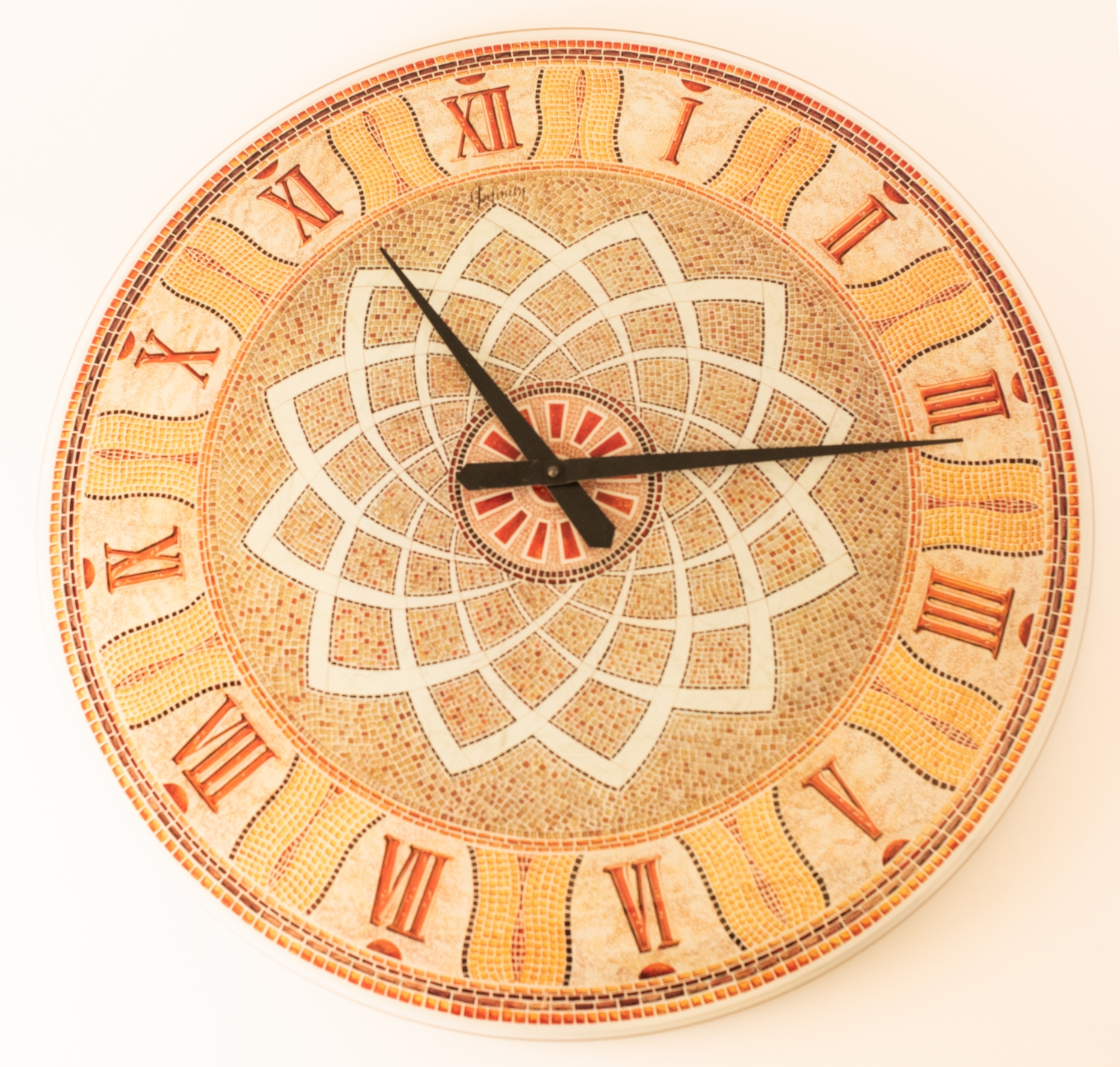The Umbilicus Clock
Tempered glass clock with artistic silk screen printing acknowledges the work of the great artistic master of antiquity, Michelangelo di Lodovico Buonarroti Simoni. The major misperception of the pavement of the "Piazza del Campidoglio" is that this square is a simple geometric or ornamental motif. Michelangelo had the intention of reconnecting with his Etruscan and Roman ancestry, and therefore established in the center of Piazza Campidoglio what he named "the umbilicus" or navel of the world; and he did this by defining his challenging and intriguing oval design. Since the Etruscan's early domination in Rome, this area was considered to be highly sacred. It was the location for the triumphal pathway which covered the Fori Imperiali. The intention for this square was to once again inaugurate it as the Umbelicus Caput Mundi. The remains of the ancient Umbilicus, were located a bit farther from from the original locale. Michelangelo could not possibly place an Oval Stone in the center of the piazza, such as the one found in Delfi, the decision was made to study and develop a design which could reconnect to original Umbilical Stone in a cryptic manner. Frescoes discovered on Pompei and Roman coins bear the oval stone and diamond shapes. Some even bear the same diamond design developed by Michelangelo to suggest meridians and parallels such as on the Oval Stone preserved at the Museum of Delfi. This replica clock emulates the Piazza del Campidoglio with its concentric design, and umber and ocher colored patterned mosaic. The clock is numbered with roman numerals, with the black hour and minute hands noting the time of the day. Below the roman numeral XII is the title of the manufacturer "Infinity".



